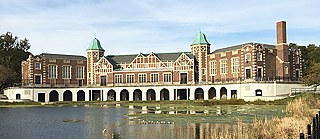Chicago
Humboldt Park

When in the second half of the nineteenth century a group of visionary city residents began plotting lines on a drawing board, what they designed in Chicago was to be the biggest park and boulevard system to date in the entire USA.
The plan was to add green spaces – places where people could breathe some fresh air – to a city characterized by raw industry. Public areas were to inject more life into the urban fabric, make city districts more easily accessible and drive economic development, particularly in the real estate market. One of the six parks that encircle Chicago in conjunction with the boulevards is Humboldt Park in the west of the city. The interlinked system also includes Lincoln Park, Garfield Park, Douglas Park, Washington Park and Jackson Park. Nearly 150 years ago, work began on Humboldt Park in a neighborhood inhabited primarily by German and Scandinavian immigrants.
Even before ground was broken, they called for the park to be named in honor of the accomplishments of the discoverer and natural researcher Alexander von Humboldt. As the park took shape only slowly, Danish immigrant and architect Jens Jensen worked his way up from assistant laborer to Humboldt Park’s leading landscape architect, thereafter exerting considerable influence over the external form of the park. Inspired by the prairie architecture that was coming into fashion at the time, Jensen designed a river, a rose garden, a boathouse and a field house for the park. They drew their inspiration from the natural landscapes of the Midwest and featured horizontal lines in a bid to reproduce the aesthetics of the prairie.
This gives a rough idea of the physical characteristics of Humboldt Park, but of course a park is a lot more than simply its architecture, buildings and vegetation.
Like the entire city itself, parks have a social element that characterizes them – they are used in different ways and by different people. They are seen as public spaces, and as such should be accessible without limitations to all of a city’s residents and visitors. They should have the right to use the public space on a communal basis, without having to pay any entry fee. But does this really apply to all parks? It is difficult to understand the nature, behavior and social form of parks. Author and architectural critic Jane Jacobs (1916–2006) described parks as ephemeral places and far more than mere “lungs” that can be designed and simply inserted into the city in order to obtain positive effects. Some parks are extremely popular, while others are left abandoned and in disrepair.
If we think back to the group of visionaries who designed the six parks in Chicago simultaneously with a view to reviving and enhancing the city’s neighborhoods, and if we look at the parks in their various districts today, one thing is immediately clear: there are marked differences between them. While Garfield Park belongs to the neighborhood with Chicago’s highest crime rate, Lincoln Park is a popular and safe tourist destination. So how is it that the parks differ so greatly?
A large variety of different restaurants and shops is to be found here. Paseo Boricua, a section of Division Street and a microcosm of the Puerto Rican community, is famous.
As a result of this diversity, a development has been set in motion in Humboldt Park that allows the wide-ranging use of the park itself. For example, the field house offers art, music and sports activities for young people, football and baseball pitches and a tennis court. The boathouse has been home to a café for several years, and with the financial support of the Puerto Rican community, the old horse stables in Humboldt Park were turned into a National Museum of Puerto Rica Arts and Culture.
The diversity in the local area generates diversity inside the park, creating a public space accessible to a wide number of people. A park depends directly on its surrounding buildings and population, in other words. The visionaries designed aesthetically pleasing spaces, and perhaps even “lungs” for the city. However, these lungs must be understood as part of a body that cannot be seen as separate from its other organs.
When the scientist and architectural critic Lewis Mumford describes the city as “a geographic plexus, an economic organization, an institutional process, a theater of social action”, parks in their role as public spaces are an important constituent part of this organism. Currently, Humboldt Park is cultivated, shaped and filled with life by its surrounding community. This has not always been the case, and opinions differ about the park’s character and accessibility.
Yet this is also a defining feature of parks and public spaces – they are ascribed a particular meaning. This meaning has a temporality that is much more akin to a rhythm than to any constant state. Parks change all the time, just as their surroundings are in a process of continuous flux. Humboldt Park is a beautiful, well-tended and popular hub in the west of Chicago that has a lot to offer. It has a colorful and vibrant profile thanks to its numerous Northern European and Puerto Rican influences. The park has currently found a balance in its rhythm. Whether this will remain so, and how the park will develop in future, is a process that can hardly be planned, but one that can certainly be influenced by its surroundings.